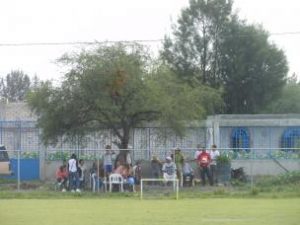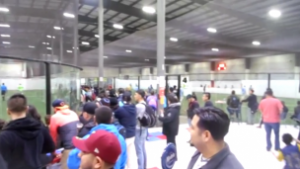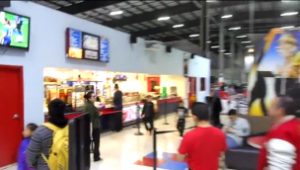Oct 31, 2017 |
Franco Bavoni Escobedo, MAPSS AM’16

Chicago hosts the second largest Mexican community in the United States after Los Angeles. Between 2010–2014, 669,000 Mexican migrants resided in the metropolitan area, representing 7% of the total population and 40% of the foreign-born population. Unsurprisingly, scholars and observers alike adopted the idea of a “Mexican Chicago.” Contrary to what some might think, however, Mexican Chicago is more than the mere presence of Mexicans in Chicago. As Nicholas De Genova argues, Mexican Chicago is produced through migrants’ everyday-life practices, which tie this space irreversibly to Mexico and, at the same time, render it irretrievable for the US nation-state. This is not to say that Mexican Chicago pertains to the Mexican nation-state. Rather, says De Genova, it is the result of migrants’ particular social situation through which the meaning of “Mexican” itself comes to be reconfigured. Thus, Mexican Chicago has to be constantly reworked and reproduced through social interaction.

Few spaces are as emblematic of Mexican Chicago as the numerous Hispanic soccer leagues that exist in the city. A steady stream of new Mexican migrants after World War II, combined with soccer’s dramatic expansion south of the border, led in the 1970s to what David Trouille calls the “Latinization” of the game. The foundation of the Chicago Latin American Soccer Association (CLASA) in 1973 was followed by the exponential growth of Mexican soccer in the next decades. According to Raúl Dorantes and Febronio Zatarain, the main four leagues average 7,000 members each, but the total number of registered players in the Chicago metropolitan area is close to a quarter million.
So how does one experience Mexican Chicago through soccer? The answer is not straightforward. My fieldwork with San Rafael, a Chicago-based team founded by migrants from a rural town of the same name in Michoacán, reveals how varying sets of relationships and situational factors can alter the meaning of “Mexican” in Mexican Chicago. A very brief comparison between the summer and winter seasons proves illuminating in this regard.
Summer Season

An atmosphere largely reminiscent of rural Michoacán characterizes the summer season games. Although many players are of the 1.5 and second generations, most supporters are first-generation migrants who have lived several years in the United States. As Luis Escala-Rabadán points out, participants “reconstruct their place of origin” through the soccer experience despite being far away from it. For example, since the heat in both San Rafael and Chicago is usually intense, attendees north and south of the border congregate under the trees to seek refuge from the sun and chat. In both locations, Mexican snacks, chicharrones, are available for purchase on the sidelines of the field. Whether in Chicago or San Rafael, most participants also enjoy a few beers while watching the game, and drinking continues for hours afterwards. Moreover, soccer games in both sites pit teams that represent specific towns against each other, which reinforces a sense of pride among participants. Finally, in both Mexico and the United States conversations are in Spanish.
Besides the similarities between both sites, attendees in Chicago intensify their sense of proximity to San Rafael by talking about the town and using certain idiosyncratic references that only someone from the pueblo would understand. For instance, they often talk about belonging to los de arriba or los de abajo (those from above or from below). The dividing line is the village’s church. Those whose homes are located before it are from abajo, while those who live after it are from arriba. In Chicago the distinction is mostly used to joke around: Rodrigo, without hesitating, teasingly refused to give Óscar a ride because he was from arriba. Thus, during the summer season, “Mexican” acquires a very specific meaning for first-generation supporters: as one of them put it, “it’s all about meeting with the people from the pueblo.”
Winter Season

At la Pershing, the facilities where the San Rafael indoor soccer games take place, things are different. The first-generation supporters from the town are mostly absent, and players are predominantly of the 1.5 and second generations. Still, the space is filled with Mexican features. As one enters the premises, the booming Mexican music can be immediately heard. The majority of players wear Mexican teams’ jerseys, and the multiple screens show the Mexican soccer league on Univision, a Spanish-language television network. Next to a cash register there is an image of the Virgin of Guadalupe, another conspicuous symbol of Mexicanness.

However, instead of vendors selling chicharrones, there is a fast food restaurant where customers can buy American food such as hot dogs, popcorn, and nachos. Whereas the use of English is extremely limited in the summer, the norm at la Pershing is a combination of both languages. On and off the soccer field, continuous code switching between Spanish and English soon becomes apparent. There is also a store where people can acquire sports equipment. When I walk in and ask for shin guards in Spanish, the clerk asks me to please repeat my question in English, as she cannot understand. It then dawns on me: this is just another face of Mexican Chicago, no less Mexican than the one that emerges during summer season games. As a 1.5-generation player told me, this is an opportunity to feel “more Mexican” as opposed to feeling “more American” while at work.
In sum, although the San Rafael soccer team is doubtlessly embedded in Mexican Chicago, its meaning varies significantly in different settings and according to the actors involved. However, this is just the first step of the analysis. As Lisa Wedeen argues, the importance of these practices does not reside simply in what they mean to their practitioners, but also in the ways in which they produce specific logics and generate observable political effects. That is, precisely, the goal of my research.
References
- De Genova, Nicholas. 1998. “Race, Space, and the Reinvention of Latin America in Mexican Chicago,” Latin American Perspectives, 25: 87–116.
- Dorantes, Raúl and Febronio Zatarain. 2007. …Y nos vinimos de mojados: cultura mexicana en Chicago. Mexico City: Universidad Autónoma de la Ciudad de México.
- Escala-Rabadán, Luis. 2012. “Migración, redes sociales y clubes de futbol de los migrantes hidalguenses en Estados Unidos.” In Offside/Fuera de lugar: futbol y migraciones en el mundo contemporáneo, edited by Guillermo Alonso Meneses and Luis Escala-Rabadán, 133–150. Tijuana: El Colegio de la Frontera Norte.
- Trouille, David. 2008. “Association Football to Fútbol: Ethnic Succession and the History of Chicago-Area Soccer since 1920,” Soccer & Society, 10: 795–822.
- Wedeen, Lisa. 2008. Peripheral Visions: Publics, Power, and Performance in Yemen. Chicago: The University of Chicago Press.
Oct 27, 2016 |
Enrique Dávila, PhD Candidate, Department of History, BA Preceptor in Latin American Studies
What is the Latino Vote? This was the question posed to a panel of experts sitting in front of an audience at the University of Chicago’s Quadrangle Club on October 6, 2016 (1). The panel moderator, History Professor Emilio Kourí, wasted no time getting to the point when he asked:
How good is the category [Latino] at putting together collective political behavior? Is there a Latino voting bloc? Or is that an aspiration?
Each of the three panelists—Cook County Commissioner, Jesus “Chuy” García, Professor of Sociology, G. Cristina Mora, and Professor of History, Geraldo L. Cadava—offered different perspectives on the existence of, and possibilities for, a Latino vote. Below, I will describe three perspectives, or lenses, that they prompted me to adopt when thinking about the future of the Latino vote.
A Generational Lens
“How did I become Chicano if I was born in Mexico?”- Cook County Commissioner, Jesus “Chuy” García
First I realized the importance of a generational lens capable of panning across time to see the gradual differentiations between Latinos over a given period. Currently, the average eligible Latino voter is 28 years old (2). This voter came of age in a world with a much different relationship to ethnic and racial categories than previous generations. This generational difference was made apparent when Commissioner García recounted to the audience his first encounter with US racial and ethnic categories. In the late sixties, García moved from Durango, Mexico to Chicago. Upon his arrival, he was encouraged to identify, first, as Mexican-American, then later, as Chicano. In response, García asked his friends and family, “How did I become Chicano if I was born in Mexico? How can I be Chicano if my passport and birth-certificate say Mexicano?” His stance changed over time, in part due to his activism. As an activist, García’s categorical affiliations became more flexible and he found value in searching for “a sense of common purpose” amongst Latinos (3).
“Younger Latinos have grown up in a society where the terms ‘Latino’ and ‘Hispanic’ are ubiquitous.” -G. Cristina Mora, Professor of Sociology, University of California, Berkeley
Commissioner Garcia’s first encounter with ethnic and racial categories compared tellingly with the way in which Latinos interact with these categories today. Professor Mora pointed out that younger Latinos have grown up in a society where the terms “‘Latino’ and ‘Hispanic’ are ubiquitous.” These younger Latinos have grown up using these categories on college applications, census forms, and have seen them attached to the names of their after-school clubs and organizations. And while García grew up using Latino as a category to help politically mobilize his peers, Mora explained that the current generation thinks of politics as just one aspect of their Latinidad existing alongside music, art, and other “cultural [and] emotional expressions of solidarity.” A generational lens allows one to see the subtle differences in how Latinos from different age groups engage with the Latino category.
A Particularity/Similarity Lens
The issue of Latino and Hispanic political categories “relates to questions about similarities and particularities.”- Geraldo L. Cadava, Professor of History, Northwestern University
In addition to a generational lens, I realized we need a lens that can zoom in and out of the category to see the particularities and similarities of the Latino community. Professor Cadava explained how a zoomed-out historical perspective revealed that Latinos, as a whole, have had similar experiences with “issues of race, immigration, empire, and[/or] labor.” Conversely, a zooming in brings into focus the particular issues that have affected the Latino subgroups more directly, e.g. Mexican-Americans and the border, Puerto Ricans and statehood, and Cuban-Americans and their relationship to Cuba and Fidel Castro. Only by understanding when differences matter—as obstacles to collective political action—and when they can be replaced by larger identities and shared interests, will we be able to imagine the possibilities for a unified Latino vote.
“Hoy marchamos, mañana votamos”
While the panelists offered different perspectives with which to view the Latino electorate, they all seemed to agree that political and electoral engagement had yet to produce positive national results for the Latino community. For García, the 2006 national immigration marches should have led to higher Latino political participation. “Hoy marchamos, mañana votamos,” he said, echoing the chant marchers used in 2006. But while many marched, far less voted. Latino voter participation remained largely unchanged in the 2006 midterm elections (4).
An Emotional Lens
“Well-earned cynicism”
The lack of political participation (and representation) explains the need for a third lens—sensitive to the full emotional spectrum that might influence the Latino electorate. Mora explained that, “as much as we talk about hope and optimism when elections come around, I think we should also, really, seriously talk about cynicism.” For Mora, Latinos may be expressing some “well-earned cynicism,” an understandable response for a group that has been heralded as the future of the country since the 2000s (and earlier), yet still remains underrepresented in institutions of higher learning and politics (5). Hope, cynicism, and apathy affect politics as much as “harder” economic and legal factors. Only by accounting for such emotions can we understand the limits and possibilities of the Latino vote.
Conclusion: A Case for Multiple Viewpoints
Only by adopting the different lenses proposed in this seminar can we begin to think about how Latinos will shape the upcoming election: one lens that can see the subtle differences between the generational experiences of Latinos; another lens that can zoom in and out to see the similarities and capture the particularities of the different Latino subgroups; and finally, a lens that recognizes the full spectrum of emotions that can influence Latino voting patterns.
Undoubtedly, the future of Latino politics will rest upon decisions made by Latino millennials. As each of the panelists stated, millennials are the future of the Latino vote. But will future scholars be able to detect how this young and dynamic constituency is affecting electoral politics? If the Latino vote exists, will we have the multiple lenses needed to view it? Perhaps the 2016 presidential election will provide insight. For now, we’ll just have to wait and see.

Footnotes
(1) The seminar was sponsored by the University of Chicago’s Katz Center for Mexican Studies, Institute of Politics, and Center for Latin American Studies.
(2) Eileen Patten, “The Nation’s Latino Population is Defined by Its Youth,” Pew Research Center (April 20, 2016). http://www.pewhispanic.org/2016/04/20/the-nations-latino-population-is-defined-by-its-youth/(accessed October 16, 2016).
(3) Commissioner García’s ideas became so flexible that he even admitted to later identifying as Chicano in certain settings.
(4) “The Latino Electorate: An Analysis of the 2006 Election,” (July 24, 2007) http://www.pewhispanic.org/2007/07/24/the-latino-electorate-an-analysis-of-the-2006-election/(accessed October 16, 2016).
(5) For more recent statistics on representation see “Latino Victory Project Releases First Interactive Mapping Tool Illustrating Latino Demographics and Political Representation Following 2014 Elections” (July 28, 2015) http://latinovictory.us/latino-victory-project-releases-first-interactive-mapping-tool-illustrating-latino-demographics-and-political-representation-following-2014-elections/ (accessed October 16, 2016).
The contents of this blog do not necessarily reflect the views of the Center for Latin American Studies or the University of Chicago.






